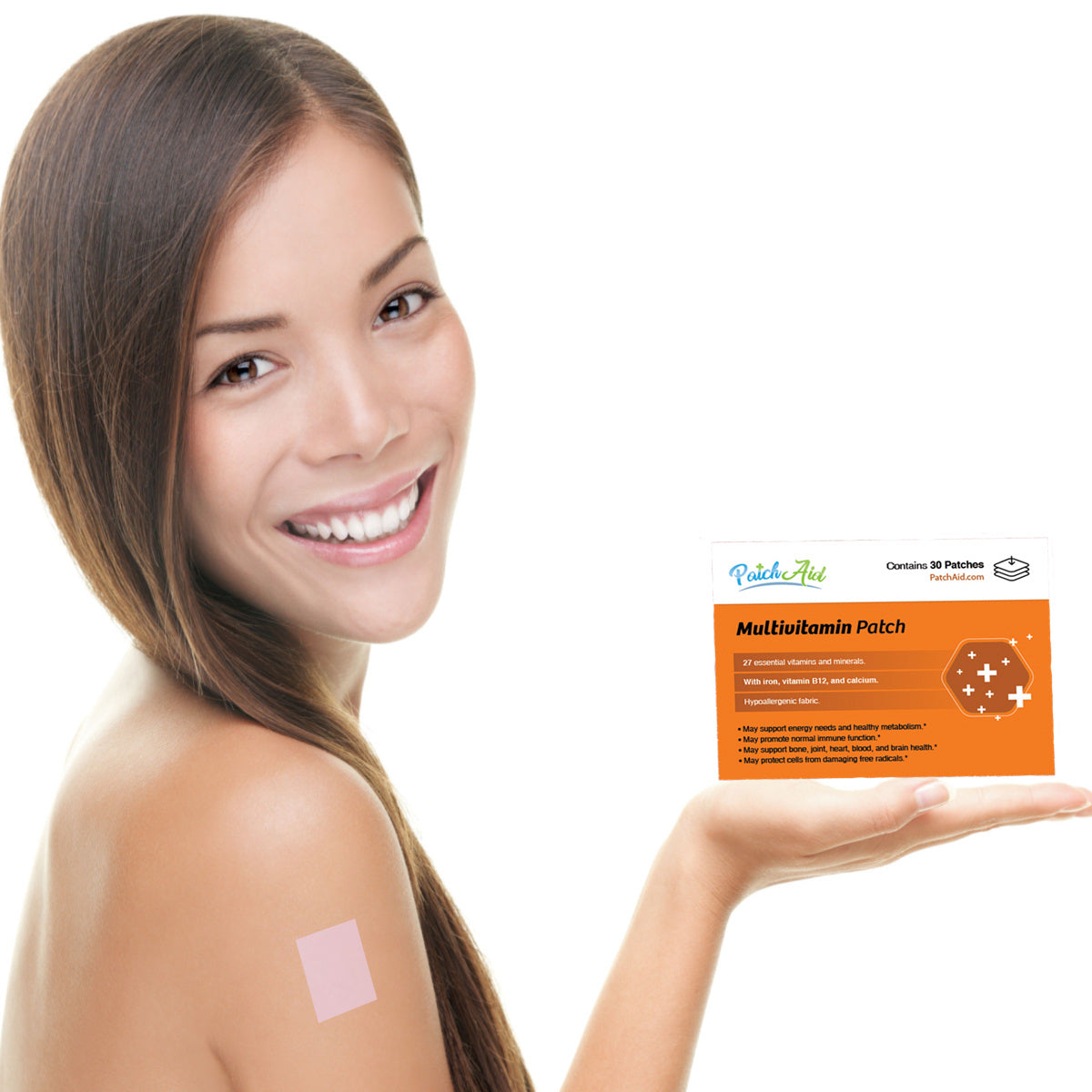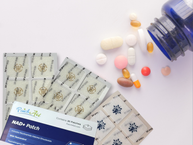Vitamin patches may sound neat, but do they work? How can you possibly get your vitamins without taking them in orally to digest and absorb them through the gastrointestinal tract?
Vitamin patches get the nutrients to you through your skin. The ingredients go directly into your bloodstream without going through the digestive process. Here’s the info on how vitamin patches work.
Types of Topical Delivery Systems Including Patches
There are many other forms of topical medications and therapeutics. These are some examples.
- Gels
- Ointments
- Creams
- Sprays
- Powders
In addition, medicated or other therapeutic patches, or transdermal therapeutic systems (TTS), have been used for a variety of applications, not just for delivering vitamins. These are some examples that may be familiar.
- Nicotine patches. These help people quit smoking by delivering the addictive chemical, nicotine, without the other chemicals in tobacco and cigarette smoke.
- Birth control (contraceptive) patches and other hormonal patches, such as menopausal therapy.
- Opioid patches to manage intense pain without cessation.
How PatchAid Vitamin Patches Work
PatchAid Vitamin Patches are a type of transdermal therapeutic system that uses a matrix. Here’s what happens.
The ingredients are suspended in the adhesive layer. This type of structure is why PatchAid Patches are known as matrix style, or monolithic, transdermal patches.
The user applies the patch. Heat and moisture from the skin activate the patch. The active ingredients, such as vitamins, minerals, fatty acids, or herbal extracts, are slowly extracted from the adhesive layer.
These ingredients are absorbed into the body across the outer layer of skin, called the stratum corneum.
The ingredients go directly into the bloodstream, in the capillaries in the skin. They are taken into circulation.
When to Use Vitamin Patches
Do you need vitamin patches? Could you benefit from using a patch instead of an oral supplement? Which PatchAid Patches might be best for you?
If you’re first making the switch to patches, or you’re just looking for a basic nutritional supplement, the PatchAid Multivitamin Plus Patch may be a good fit for you. Other patches, such as a Vitamin D3/Calcium Patch, the B12 Energy Plus Patch, and the Iron Plus Patch, focus on specific nutrients that may be deficient.
There are also patches designed for specific health needs or goals. For example, there’s an entire line of Weight Loss Support Patches, which can support a keto, low-carb, or other low-calorie weight loss diet.* Or you can find patches to support heart, joint, vision, or other specific areas of health.
A benefit of PatchAid Patches over oral supplements is that they can contain higher levels of active ingredients and a wider variety.
Ask your healthcare provider which patches may be good for you, and be sure to get approval before using any supplement.
How to Apply and Use PatchAid Vitamin Patches
This is how to use PatchAid Vitamin Patches. The instructions are printed on each package of patches.
- Choose an area of skin that doesn’t have an open wound or a lot of hair. You’ll also want to choose an area of skin that doesn’t get rubbed much. For example, your waist may not be a good idea if you wear a belt.
- Clean and dry the area of skin to which you are going to apply the patch.
- Remove the patch from the release liner so that the adhesive is exposed. Stick the path onto your skin and push firmly to press down all areas of the patch.
- The ingredients will be activated when the heat from your skin reaches the matrix that suspends them.
- Leave the patch on for up to 8 hours. Then remove and discard it. If you have trouble removing the path, a bit of rubbing alcohol or some baby oil can make it easier.
- It’s okay to work out and sweat when you are wearing your patch. They’re flexible and able to withstand sweating.
Remember to discard used patches and to store them out of the reach of children. Patches have active ingredients, and you don’t want anyone to get an accidental overdose.
More Tips for Using Topical Vitamin Patches
When you follow these tips, you can get more out of your PatchAid Vitamin Patches by allowing them to release the maximum possible amount of their ingredients and by maximizing transdermal absorption.
- It’s okay to use multiple PatchAid Patches at once. Just make sure, when you apply them to your skin, that they don’t overlap with each other. That can interfere with the rate of nutrient absorption. It can block the nutrients from completely emptying from the matrix of the patch.
- Instead of always using the same site on your body, change where you apply the patch sometimes. That can help prevent it from irritating your skin.
- Store your unused patches in a dry area that doesn’t have extreme heat or cold. It’s also best to keep them out of direct sunlight.
- Keep your patch from getting soaked. If the patch gets too wet, the adhesive can become stickier and make the patch harder to remove. Rubbing alcohol and baby oil can help release the patch.
- Be sure to use your patches before the expiration date, which is located on the back of the interior pouch. The shelf life is two years.
As always, it’s best to talk to your doctor before using any supplement, including vitamin patches.
Vitamin Patches from PatchAid come in a variety of formulas to meet your nutritional and health needs. You don’t have to choke down large capsules or bad-tasting pills, and you don’t have to follow a complicated regimen to avoid interactions while absorbing the nutrients during digestion. Instead, vitamin patches work through transdermal absorption so they’re easy and convenient. Talk to your doctor about which ones may be best for your needs.
*The Food and Drug Administration has not evaluated these statements. PatchAid patches are not intended to diagnose, treat, cure or prevent any disease. Anyone with a medical condition should seek the advice of a licensed medical practitioner. Individual results may vary.







